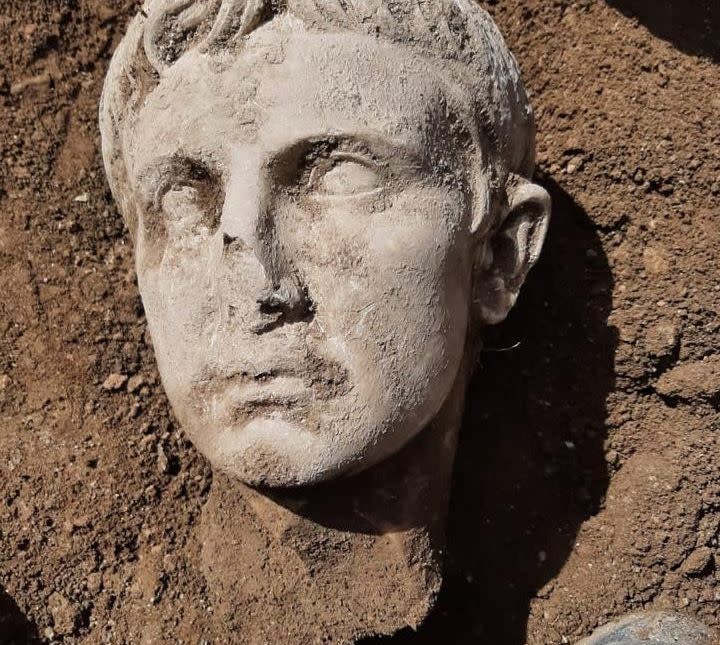2,000-year-old marble head of Rome’s first emperor, Augustus, unearthed in small Italian town
A 2,000-year-old marble head depicting Augustus, Rome’s first mayor, has been found in a small Italian town during a construction project.
Augustus ruled from 27 B.C. until he died in 14 A.D., and the find was a surprise — not least of all because the rest of the body’s whereabouts are anybody’s guess.
Archaeologist Francesco Giancola made the rare discovery as he monitored the restoration of a medieval wall in Isernia, in the south-central region of Italy known as Molise. The wall had collapsed in 2013 after strong rains. Some of the small town’s walls date back to imperial Rome, according to Smithsonian.

“While we were digging behind the wall, I saw that the earth changed color,” Giancola told CNN. “So we continued digging with precision trowels, and a block of marble came out. I immediately saw that it was a head that I recognized as belonging to a statue of Augustus due to the hair and the shape and cut of the eyes.”
The giveaway was the head’s distinct “swallow-tail” hairstyle, comprising “thick strands of hair that are divided and parted in a distinctive ‘V’ or pincer shape,” Smithsonian noted — Augustus’ signature style.
Giancola notified authorities, the mayor and the cultural heritage ministry of the find immediately, he told CNN.
The head is just under 14 inches high and dates back to between 20 B.C. and 10 A.C., archaeologist Maria Diletta Colombo with the regional department of the ministry told CNN. The full statue probably stood 6 feet 7 inches high. Finding it in that particular location was a surprise, she said.
“It was an important statue, but we do not know why it was here,” Colombo told CNN. “It could have been placed in a temple dedicated to the cult of the imperial family, or in the forum. But these are just hypotheses, since we don’t know where the forum was.”
Isernia was once a Roman colony known as Aesernia, reports Smithsonian, and neighboring powers in Italy fought over it throughout the first century B.C. because of its central location as a “gateway” into the rest of the Italian peninsula at the time.
“Isernia has a very ancient history... there are archaeological remains underneath the whole city,” town Mayor Giacomo D’Apollonio told CNN, adding that he would like to keep it in the town’s Santa Maria delle Monache museum. “It is a very important find for Isernia because it demonstrates the presence of buildings of a certain importance.”
